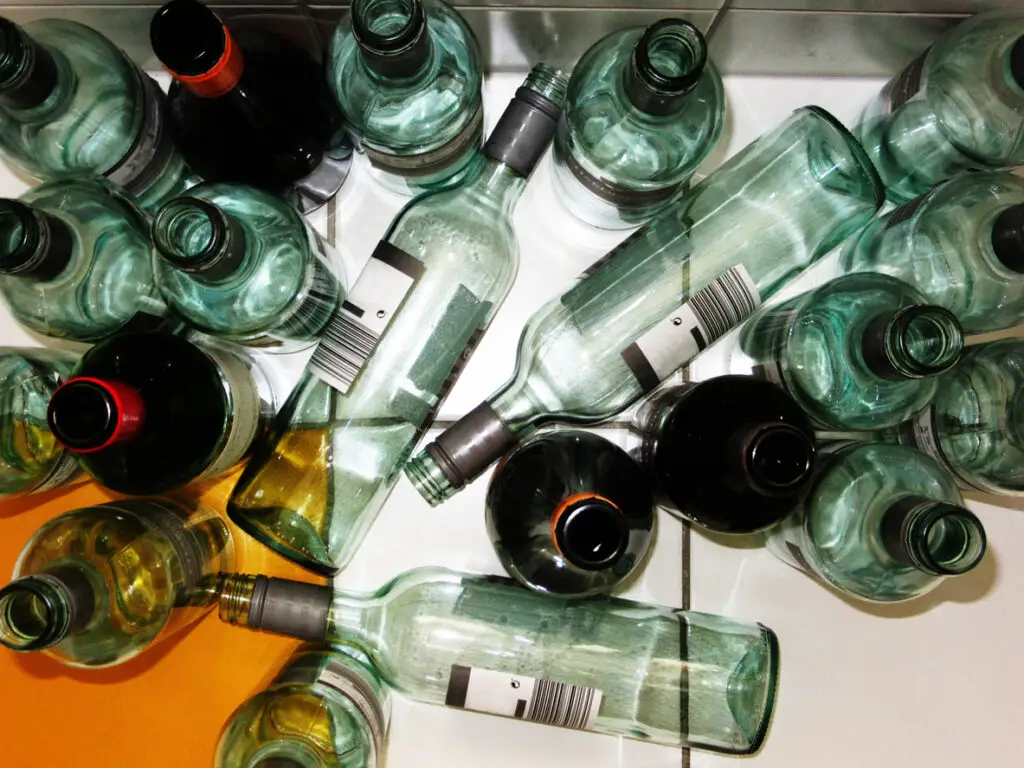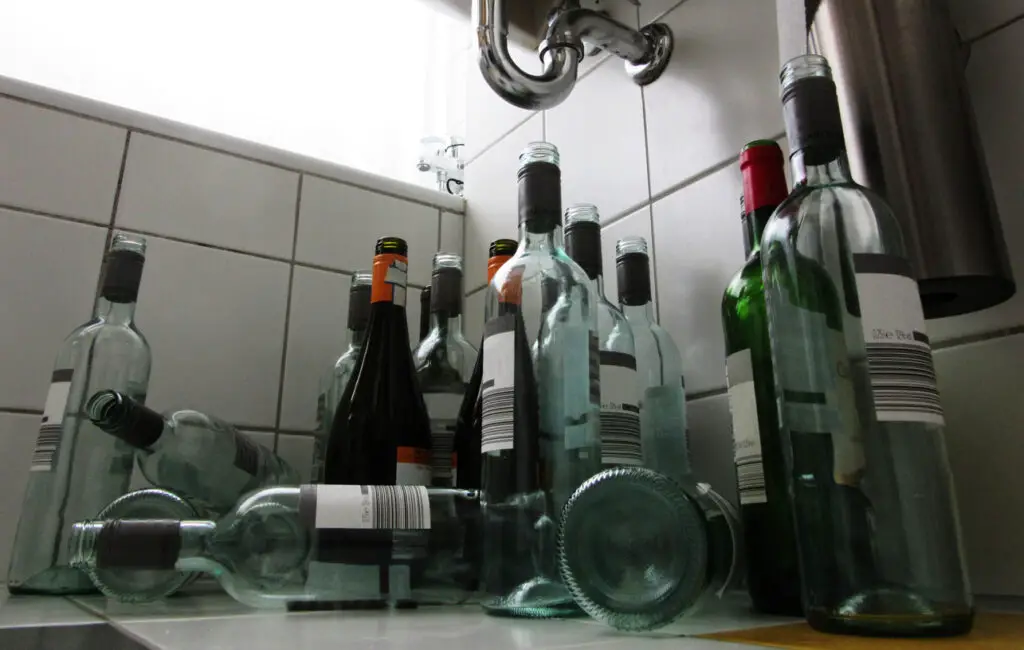The full-bodied and mature flavor of a good Chardonnay wine is a favorite of wine connoisseurs and lovers. Many enjoy the exuberant charms and low acidity of this wine, while the lack of powerful scent makes it a perfect drink to pair with anything. Nothing stops you from enjoying a casual glass of wine on a rainy afternoon, but there are a few details that go into getting the most out of your bottle. One of these is aeration, or letting a wine ‘breathe.’ So, now you may be left wondering, does Chardonnay need to breathe?
Yes, Chardonnay does need to breathe. Although most white wines don’t receive all the benefits of decanting when compared to red wines, a mature bottle of Chardonnay will definitely need to breathe. Opening your Chardonnay 30 minutes before you start drinking will help lose the volatiles of secondary aromas, leaving you with a glass of delicious and refreshing wine.
Now, this isn’t all there is to the beloved Chardonnay. Let’s dive into the wine deep end, shall we?
What is Chardonnay?
The famous Chardonnay wine is actually named a grape variety that is used to produce this wine. Chardonnay grapes are green-skinned and widely utilized in white wine production. This sort of grape originated in the Burgundy region of eastern France, which was popular for having many vineyards but is now grown everywhere.
Author Note: The Chardonnay grape itself tastes neutral, and many of the flavors associated with the wine are actually derived from other influences like terroir and oak. It is made into many different styles of wine, from crisply mineral wines to tropical fruit flavors.
The fruit notes of this wine vary according to the weather of the particular region where it was made. Chardonnays that undergo malolactic fermentation may have softer acidity and fruit tastes with some hazelnut notes.
A Short History

Chardonnay is very malleable, so it is considered the perfect grape for winemakers and grape growers. It cultivated well in pretty much any type of soil and climate. The grape reached peak popularity in the early 1980s, and it started being planted everywhere.
Up until that time period, Chardonnay was mainly a French grape and was known for its three unique styles that portrayed its flexibility. Champagne was the bubbly style, Chablis was its crisp and mineral incarnation, and in the south of Burgundy, in the vineyards around Beaune city, the wines were rich, more complex, and usually fermented and aged with oak.
When the wineries of the world went crazy for Chardonnay, they didn’t realize that a major part of the charm of Burgundy was the territory— climate and soil — responsible for the high quality and rich flavor of their Chardonnay.
Chablis and Champagne are located northern and are the coolest sites where Chardonnay ripens. In addition to that, the limestone and Kimmeridgian soil (fossilized oyster shells) contributed to the unique flavor of the wine.
Chardonnay Styles
The “Beaune style” was popularized by the Meursaults, Montrachets, and also the vineyards Pouilly-Fuissé, found further south. Despite the warm temperatures, they were still somewhat cool climates. And this was the specific style that was widely copied— fermented in oak, styled riper chardonnays.
Yes, this style was copied, but it was rarely done with a similar climate and type of soil. In most cases, it was just much too warm. The Burgundian flavor palette includes citrus, apples, and stone fruits, even reaching tropical notes in the riper chardonnays. Acidities start to plummet because the grapes were too ripe. They were also aged using oak barrels — which were most often American oak, infusing the wines with hints of dill and coconut.
This resulted in a large, buttery, and heavy style of Chardonnay that led to much controversy by wine lovers. But, today, it is considered the most popular type of white wine, and it is a name everyone has heard of. There is no household without a bottle of Chardonnay in their cupboard.
Now you may still be wondering, does Chardonnay need to breathe? We have learned about the history of this beloved wine, so let’s get to the matter at hand.
Why Do We Let the Wine Breathe?
Letting the wine breathe or aerating it means exposure to oxygen. This leads to two crucial processes that happen in wine. These are evaporation and oxidation. When these processes take place, the quality and flavor of most wines improve due to the change in chemistry.
Evaporation is the transition from liquid to vapor. You have probably noticed that there is a smell of medicine or rubbing alcohol after you open a fresh bottle of wine. This is due to the ethanol found in the wine.
Aerating your wine will help disperse this smell and remove it from the flavor. Then, you will be able to taste the wine and not just alcohol.
Substances called sulfites in the wine will also disperse when you let it breathe. These chemicals are only added to protect the wine from microbes and overoxidation. Sulfites are required to make wine, but they usually smell like rotten eggs, so it’s a good idea to get rid of them.
The second reaction is called oxidation and includes the molecules in the wine and oxygen from the air. Compounds of wine such as anthocyanins, catechins, epicatechins, and more phenolic substances are oxidized.
This oxidation may also contribute to the fruity or nutty flavor of wines, but too much of it may do the opposite. To avoid this happening, letting the wine breathe is recommended.
Do White Wines Benefit From Aeration?

Now, the above-mentioned rules apply mainly to red wines. This is due to the number of tannins in red wine. Tannins are what give red wine “power.” They are derived from the stems, seeds, and skin of grapes used in production. A wine with high tannins will taste as bitter and astringent.
Red wines contain much more tannins compared to white wines. So, aerating red wines benefits them largely; most white wines don’t require as much aeration.
We are finally at the question everyone has been waiting for, does Chardonnay need to breathe or not?
Frequently Asked Questions
Which White Wines Need to be Aerated?
White wines that are heavier in body will benefit most from aeration. Lighter white wines either don’t need or will actually be negatively affected by aeration.
Is it Necessary to Let White Wine Breathe?
No. It’s not necessary to let white wine breathe. That being said, you can aerate white wine with a heavier body if you choose, but it’s fine to drink white wines that haven’t been aerated.
Which Wines Do Not Need Decanting?
White wine, sparkling wine, and cheaper or less tannic red wines will not typically need any decanting or aeration. The general rule of thumb is that lighter bodied wines do not need to be aerated or decanted.
Does Chardonnay Need to Breathe?
Chardonnay is a very full-bodied and mature white wine that will significantly benefit from aeration, along with many other white wines of Burgundy. Now, this doesn’t mean they should be allowed to breathe for several hours, similar to red wines.
Top Tip: Around 30 minutes of aeration is plenty for Chardonnay. But, do not be afraid to experiment! If you find that it is too watery after 30 minutes, you can aerate it for less next time, or more if needed.
The only problem here is the aspect of chilliness. A part of the Chardonnay appeal is that it is served cool. Now, letting it breathe for too long may make it lukewarm, which isn’t a good look for Chardonnay. An easy solution to this is an electric aerator, which will let your wine breathe while also keeping it cool for your enjoyment.
How Does Chardonnay Need to Breathe?
So, now that we know to air out Chardonnay, how exactly is that done? Aerating wine isn’t just opening a bottle for two minutes. Here are some different ways to help you get the most out of your Chardonnay bottle.
Letting Chardonnay Breathe in a Glass
If you want to aerate just one glass of wine, pour out the wine, and taste it. If the flavor is rough, then twirl the glass and taste once again. Continue doing this until you achieve the flavor of your desire. Make sure you taste the wine after each swirl to avoid overdoing it and letting the wine get watery.
Letting Chardonnay Breathe in the Bottle
If you wish to drink a larger quantity of wine, you have to pour it out into a larger vessel such as s a decanter, a bowl, pitcher, etc., and let it settle. Simply uncorking the wine won’t expose it to enough oxygen.
Letting Chardonnay Breathe in a Decanter

You can also use a decanter to aerate wine in the traditional way. Using a pour-through aerator, you will be creating a vigorous mixing effect where the principle of Bernoulli applies.
So, your Chardonnay will be flowing from a chamber into the thinner part of the aerator, where suction is formed, and the small air hole will let air mix with the wine.
Author Note: Then, once it leaves through the bottom, aeration will continue, and your wine will taste richer. You may also use a wine funnel to aerate. Remember not to overdo it! If you drink Chardonnay exclusively, we would recommend going the simple way and using a bowl or pitcher.
But, if you are a frequent wine drinker, then investing in a good decanter may be a good idea for the future. Then, you won’t have to plan ahead so much once you know you have the right tools.
A Conclusion
Well, there you have it, you have learned everything you need about the mesmerizing Chardonnay wine. You now know all about the history of Chardonnay from France and the aeration requirements.
Not only will your knowledge wow your guests at the next dinner party, but they will also leave them surprised at how much better Chardonnay can taste after a little aeration.
So, go buy yourself some high-quality Chardonnay, let it aerate for half an hour, and enjoy!
To living a full-bodied life,
Wesley

